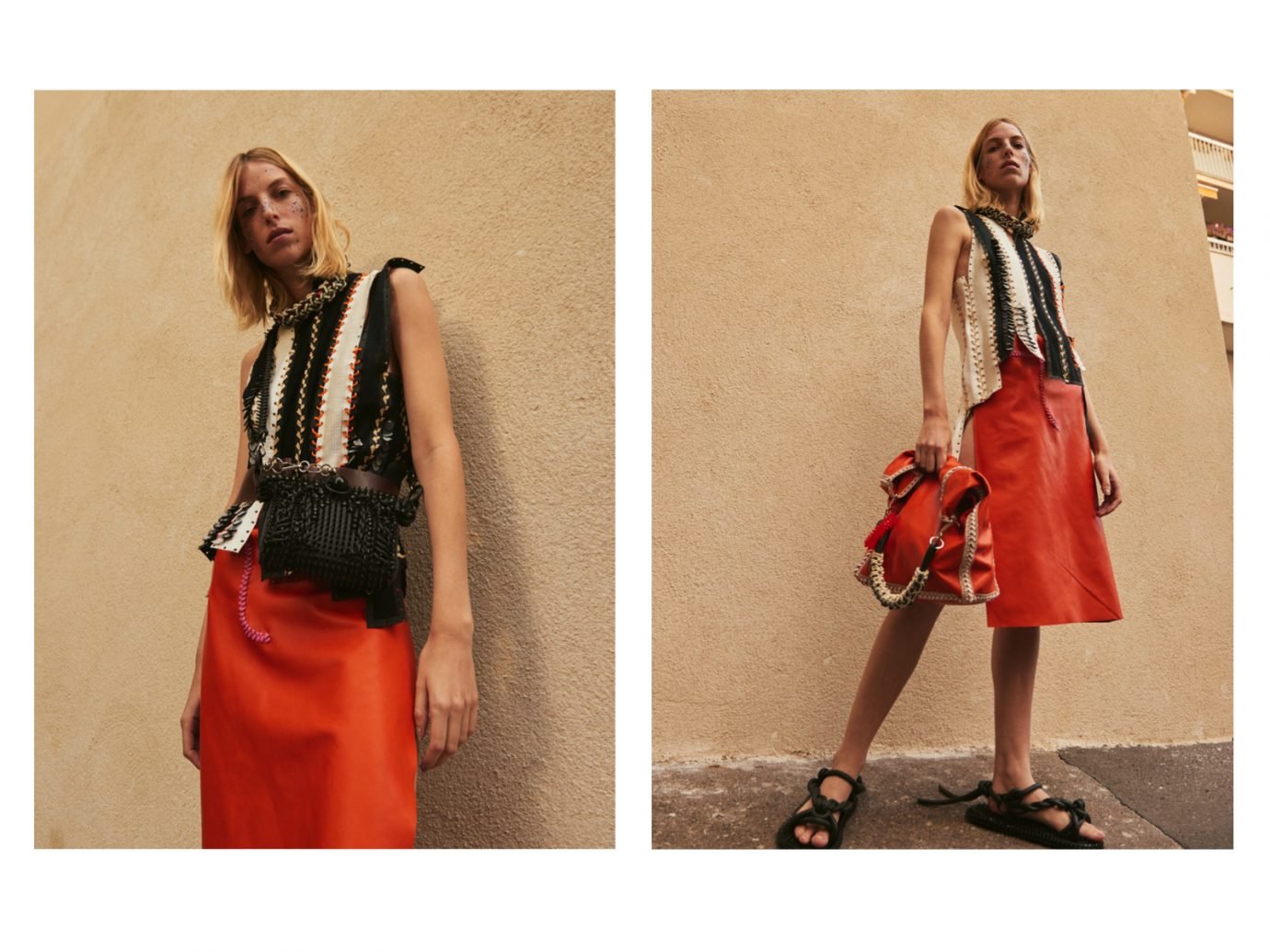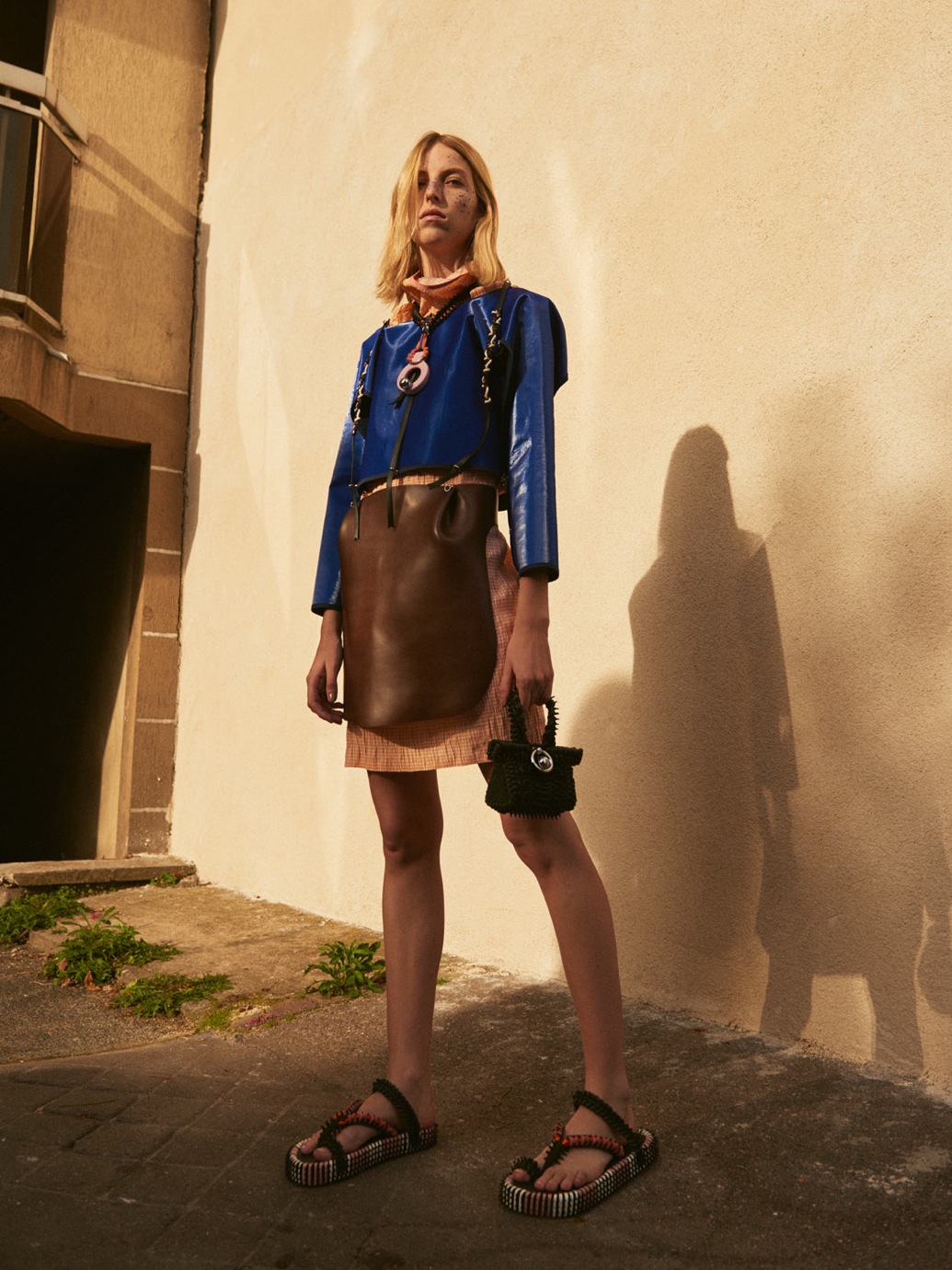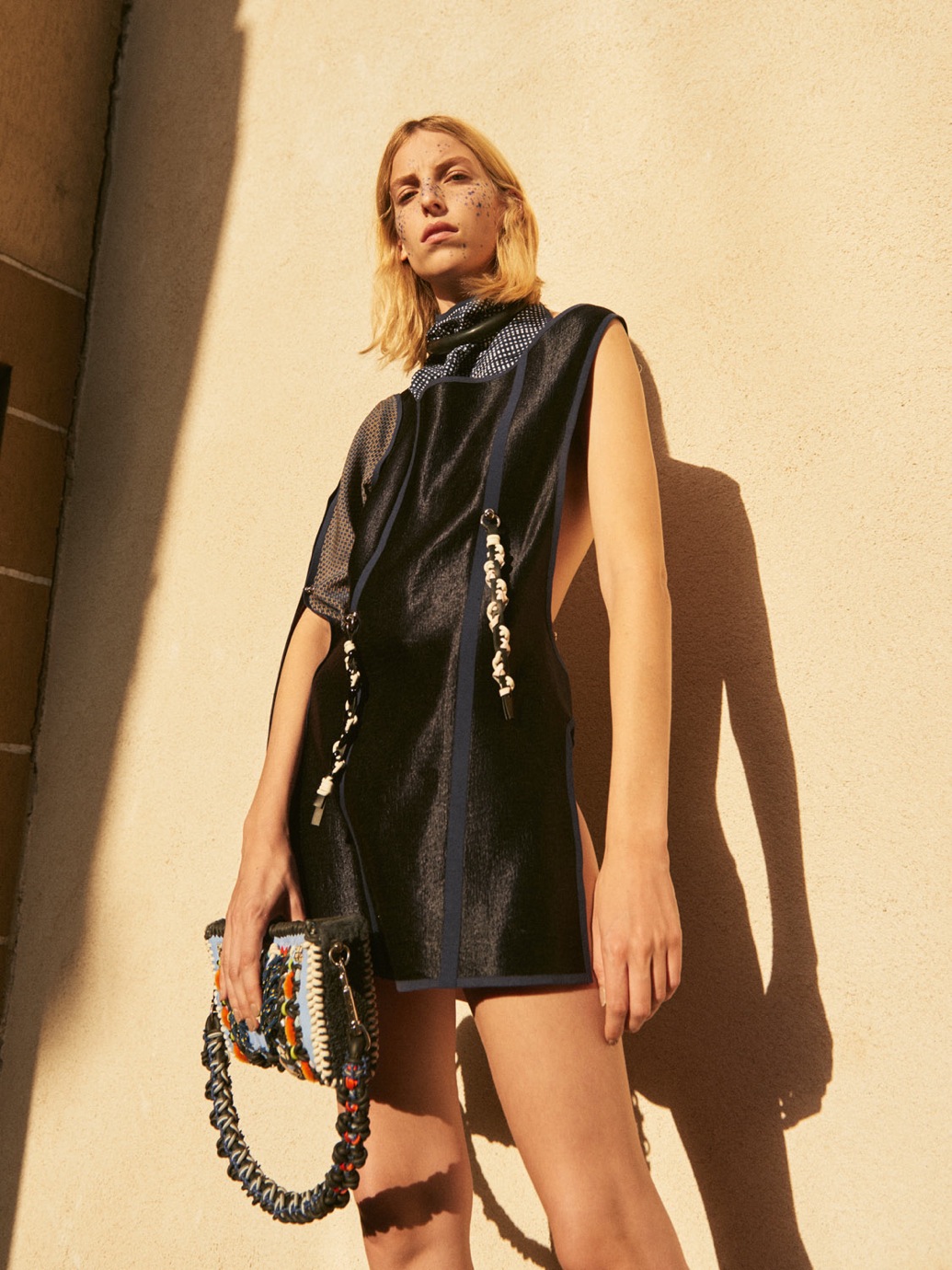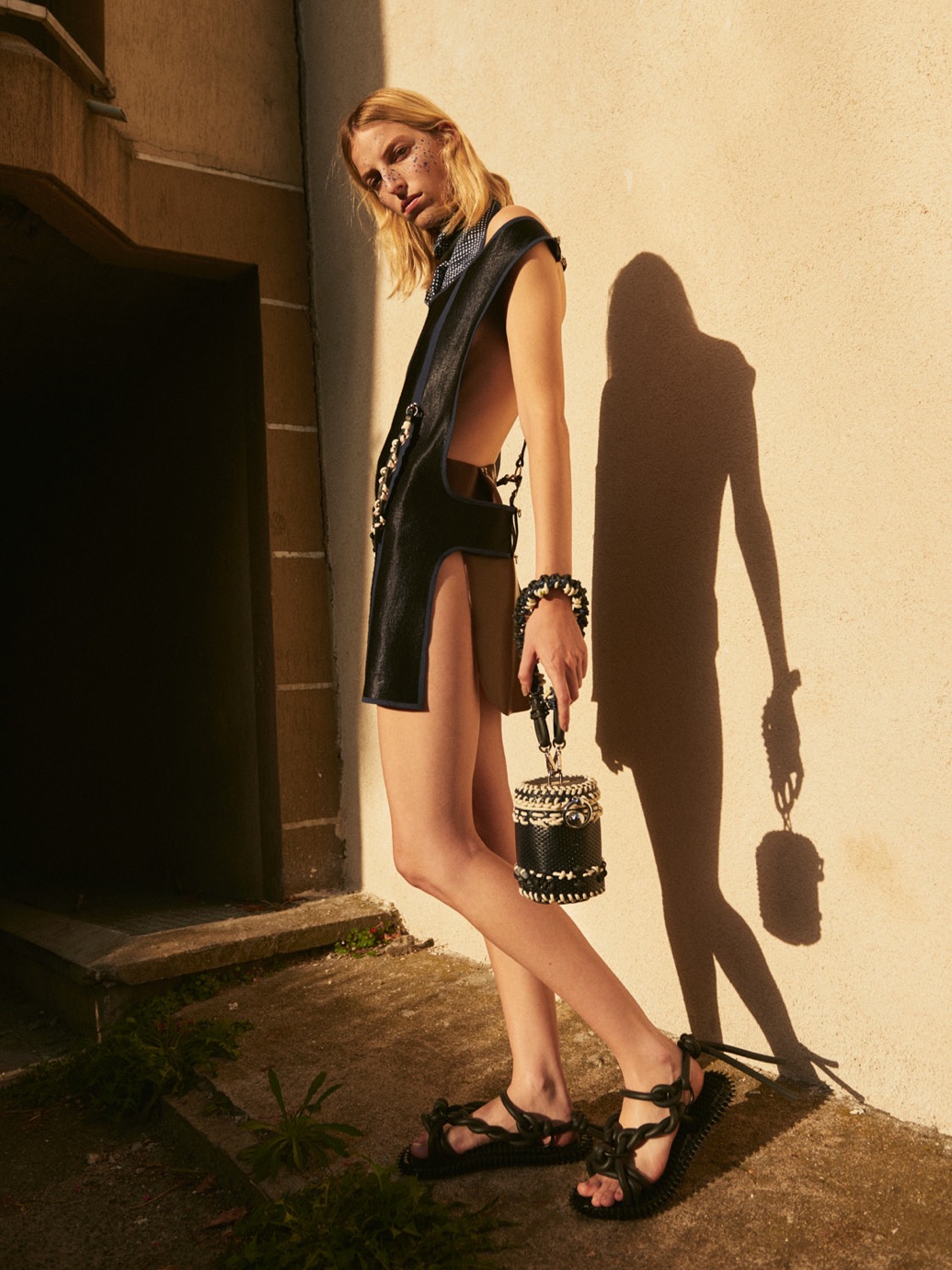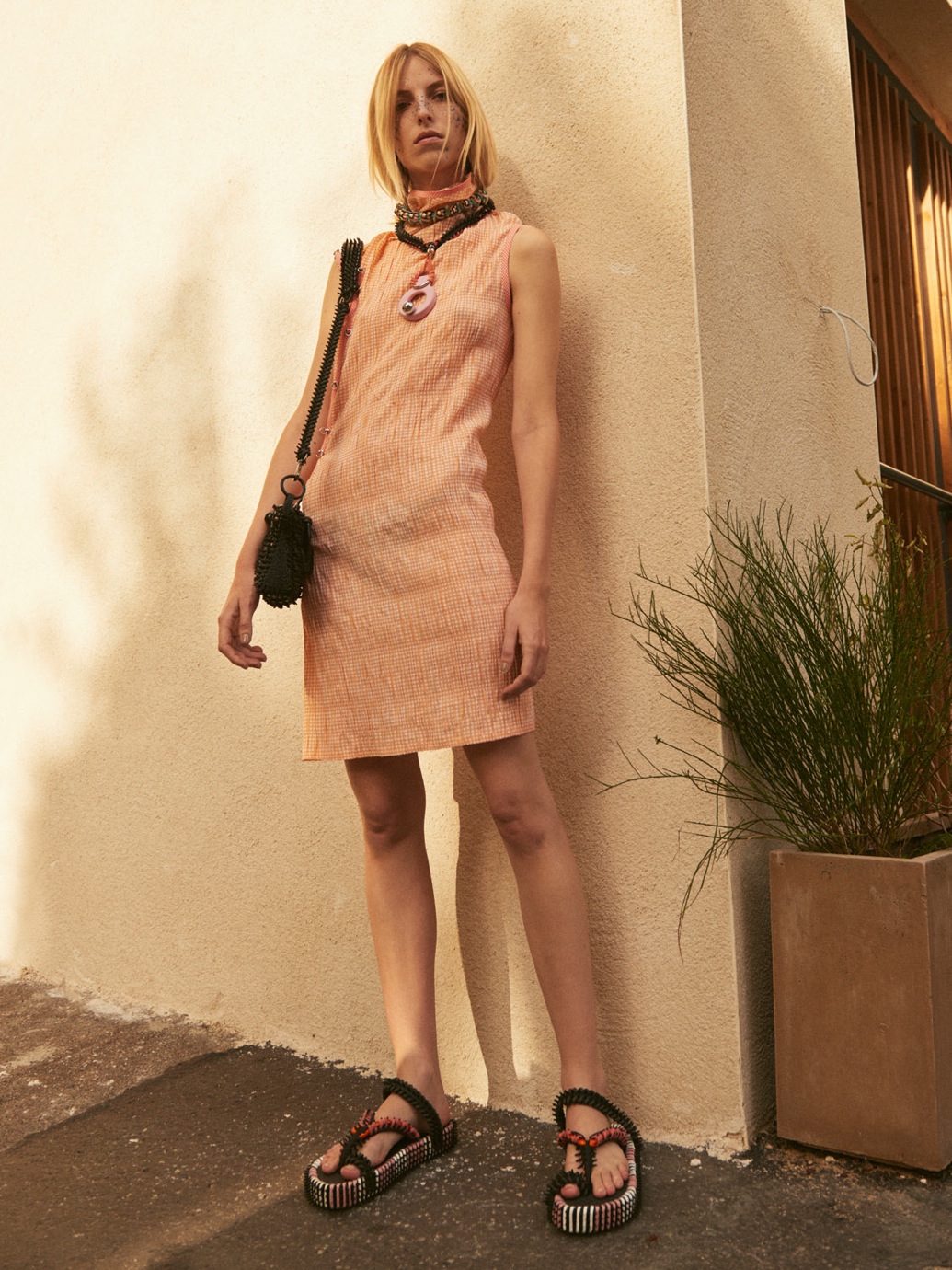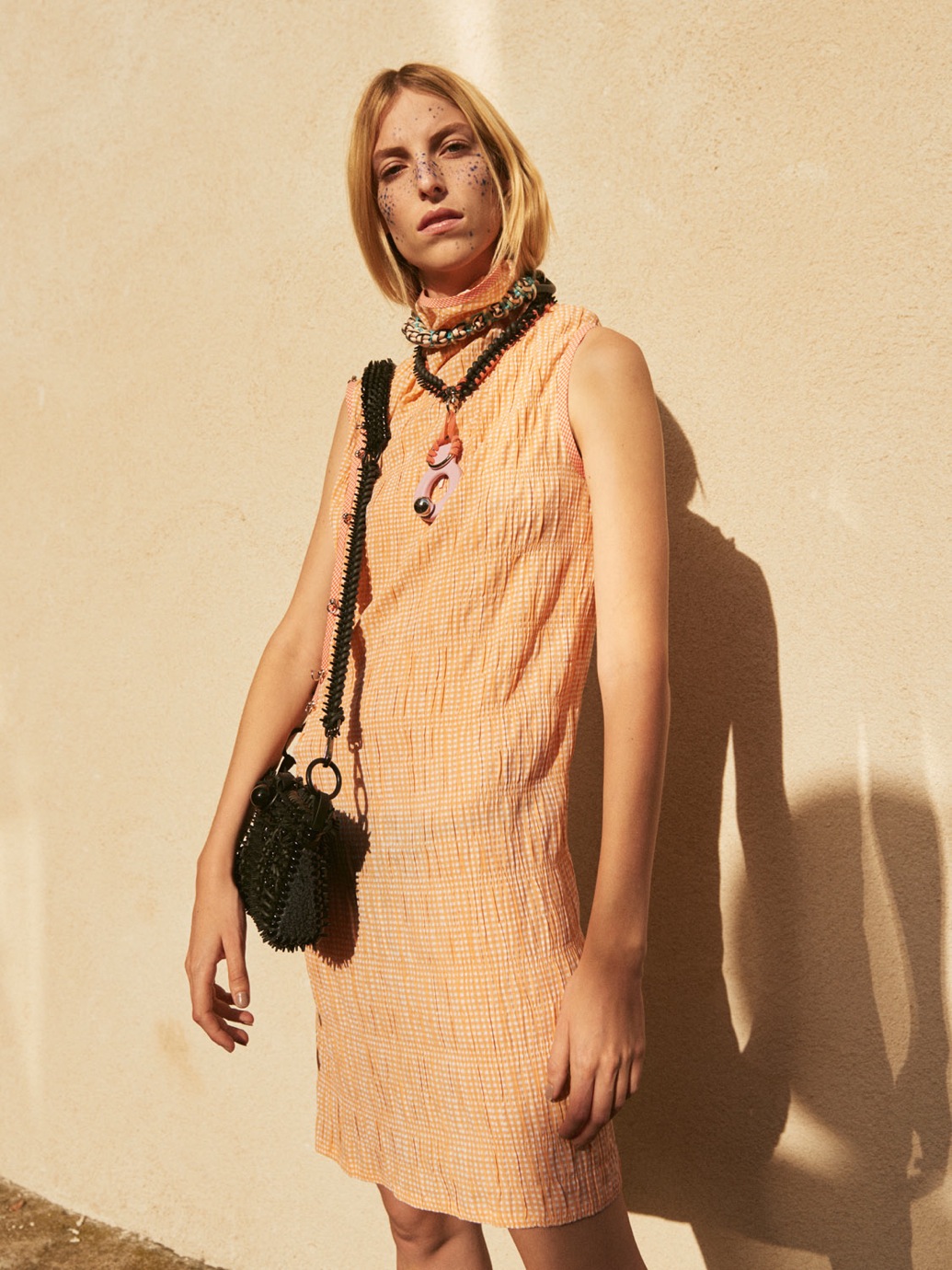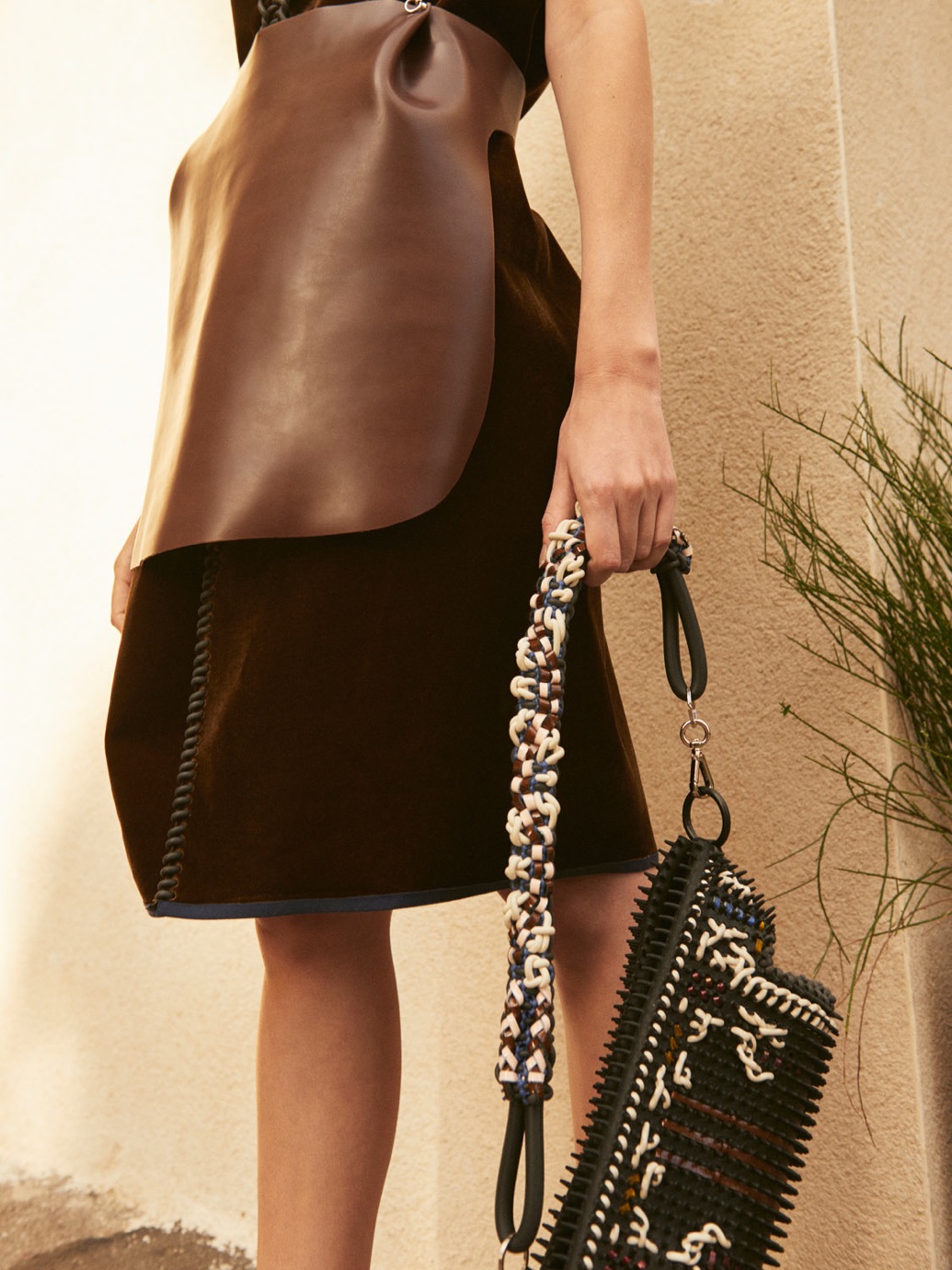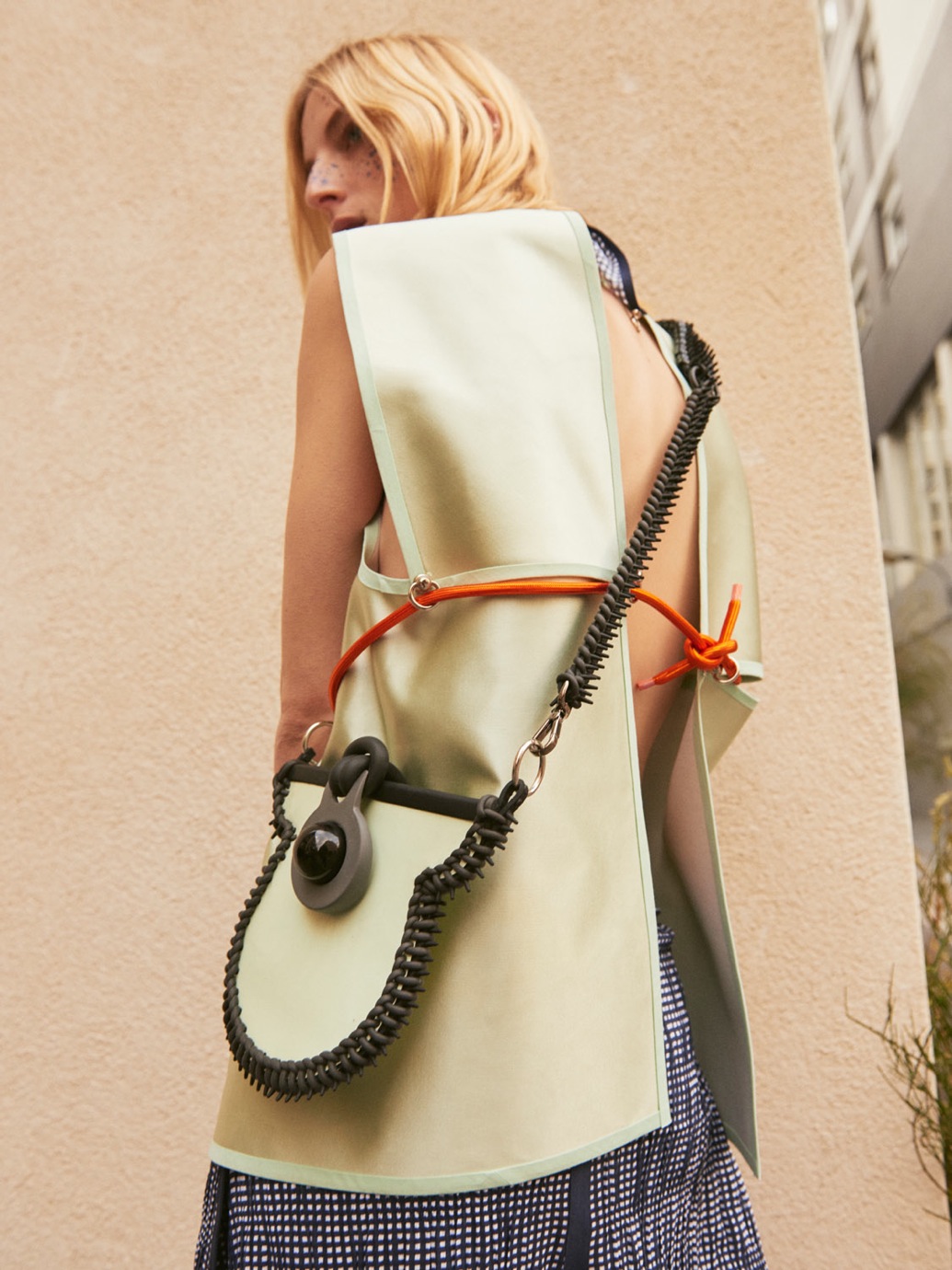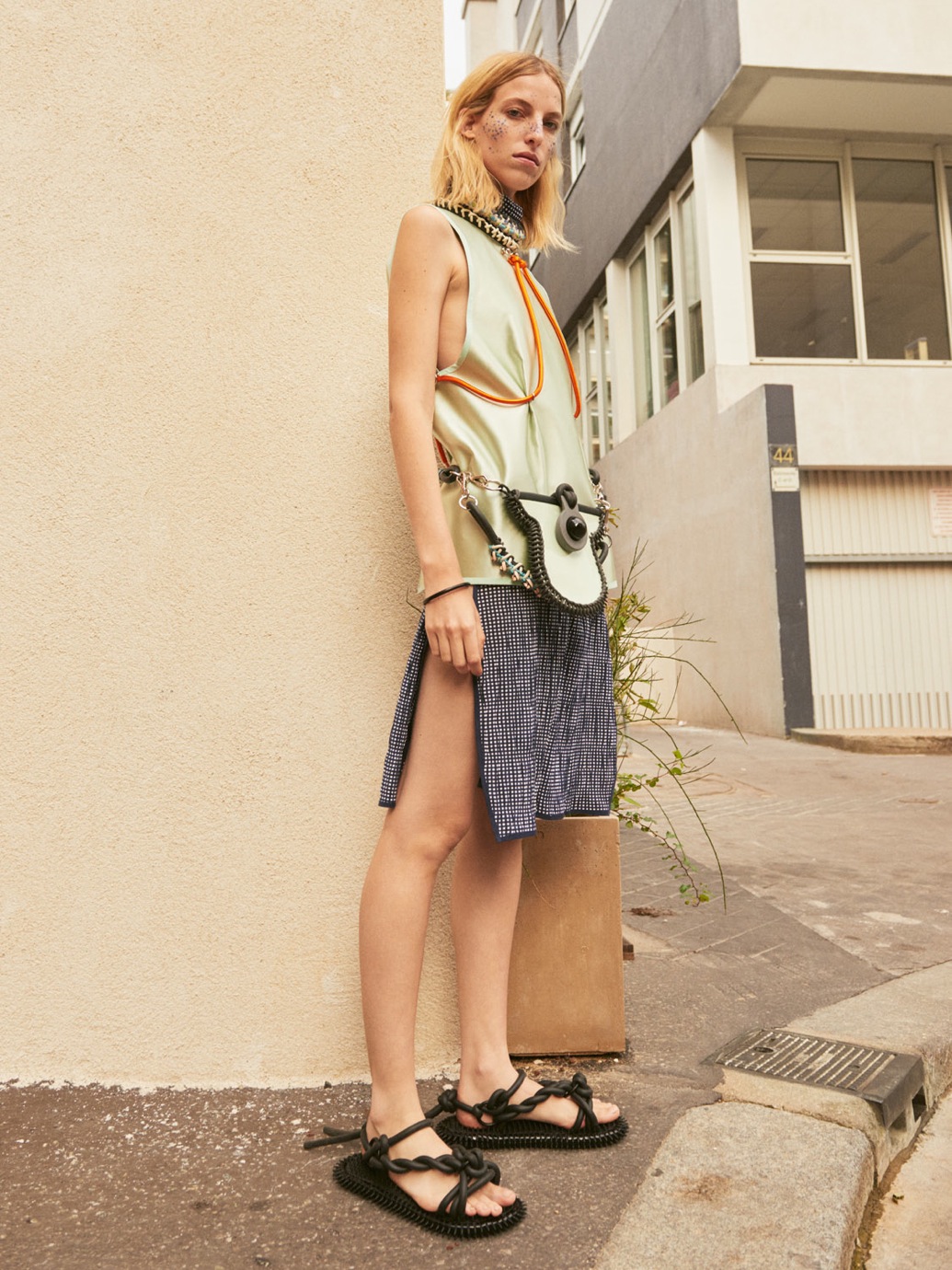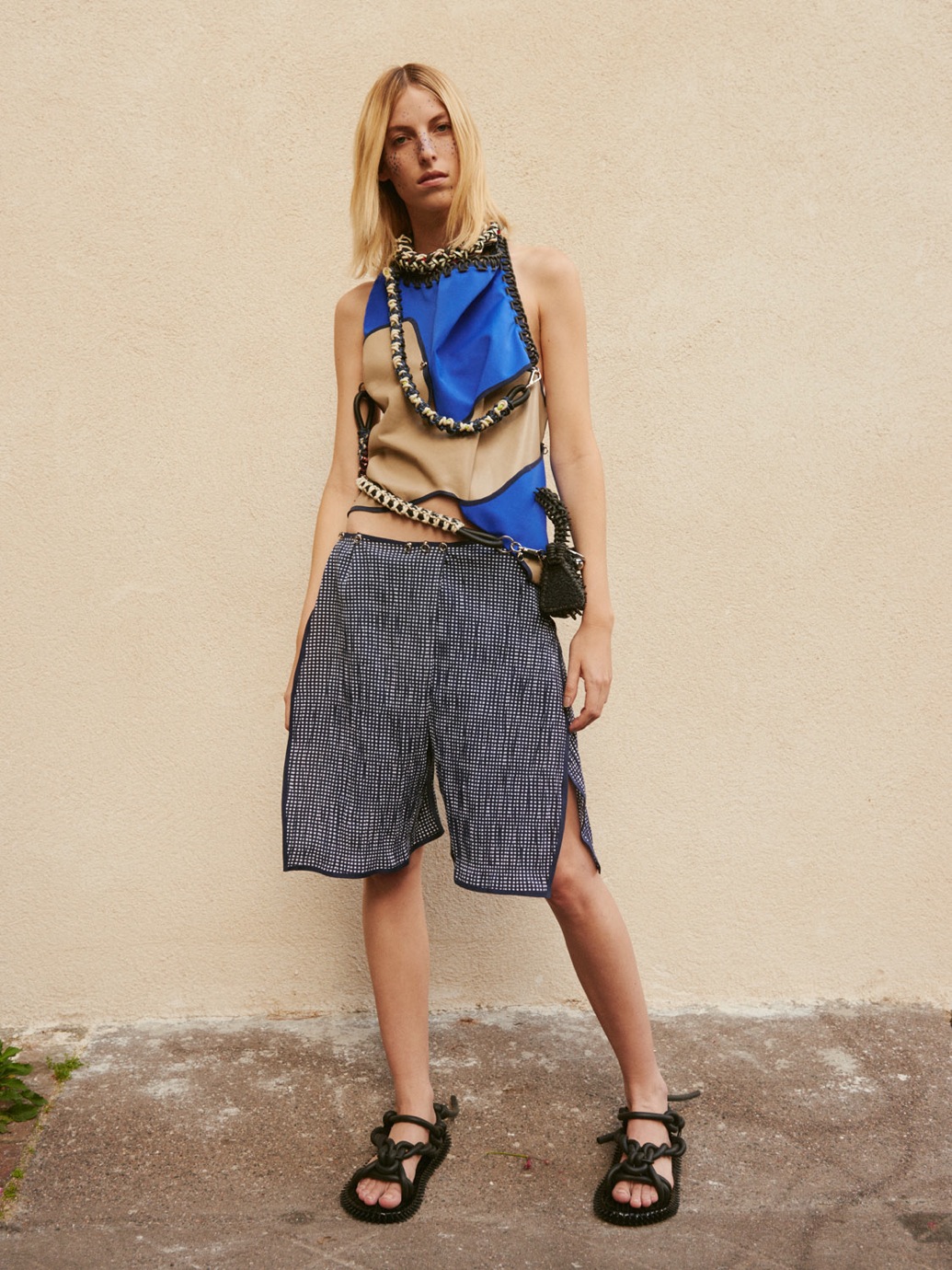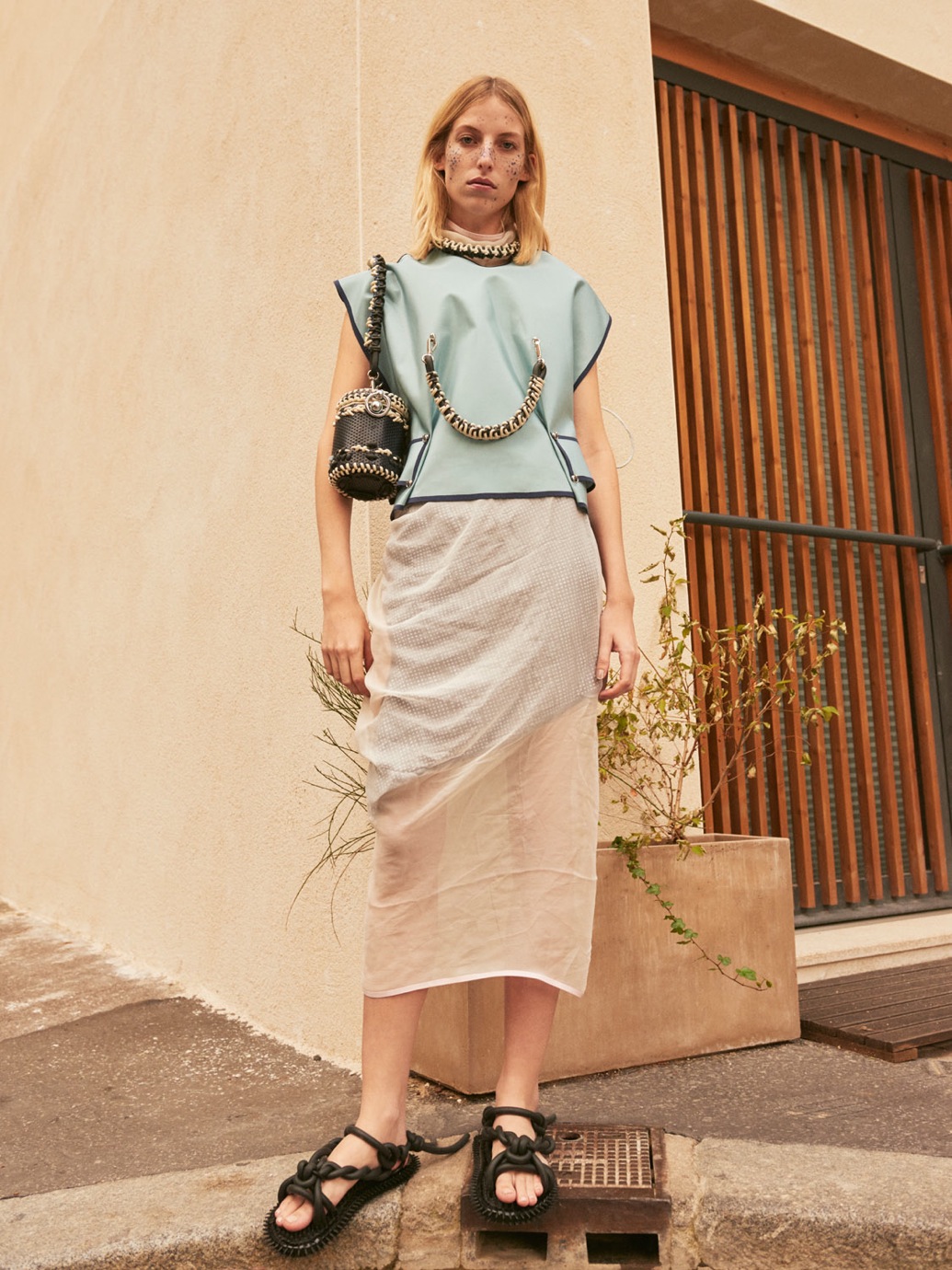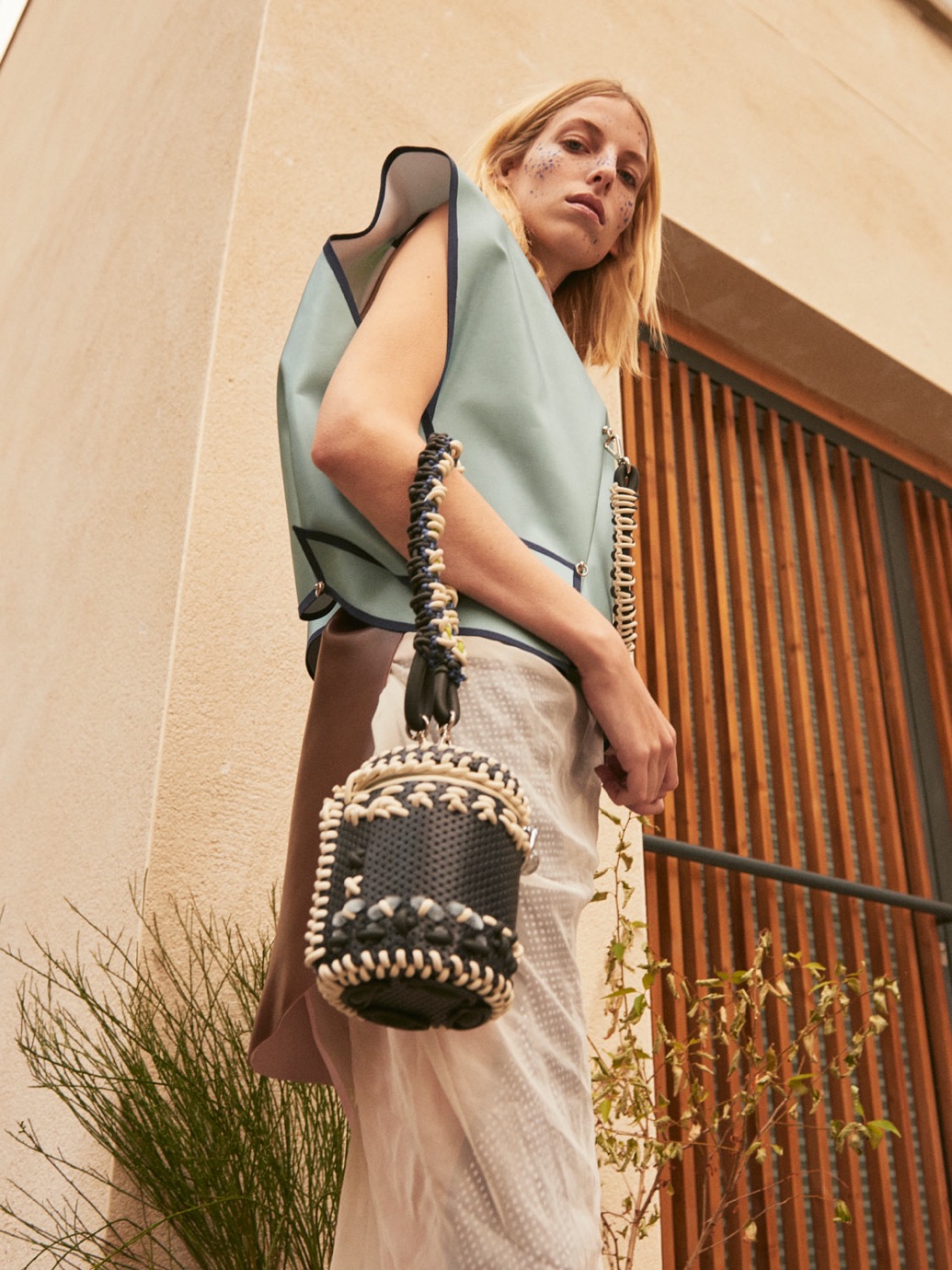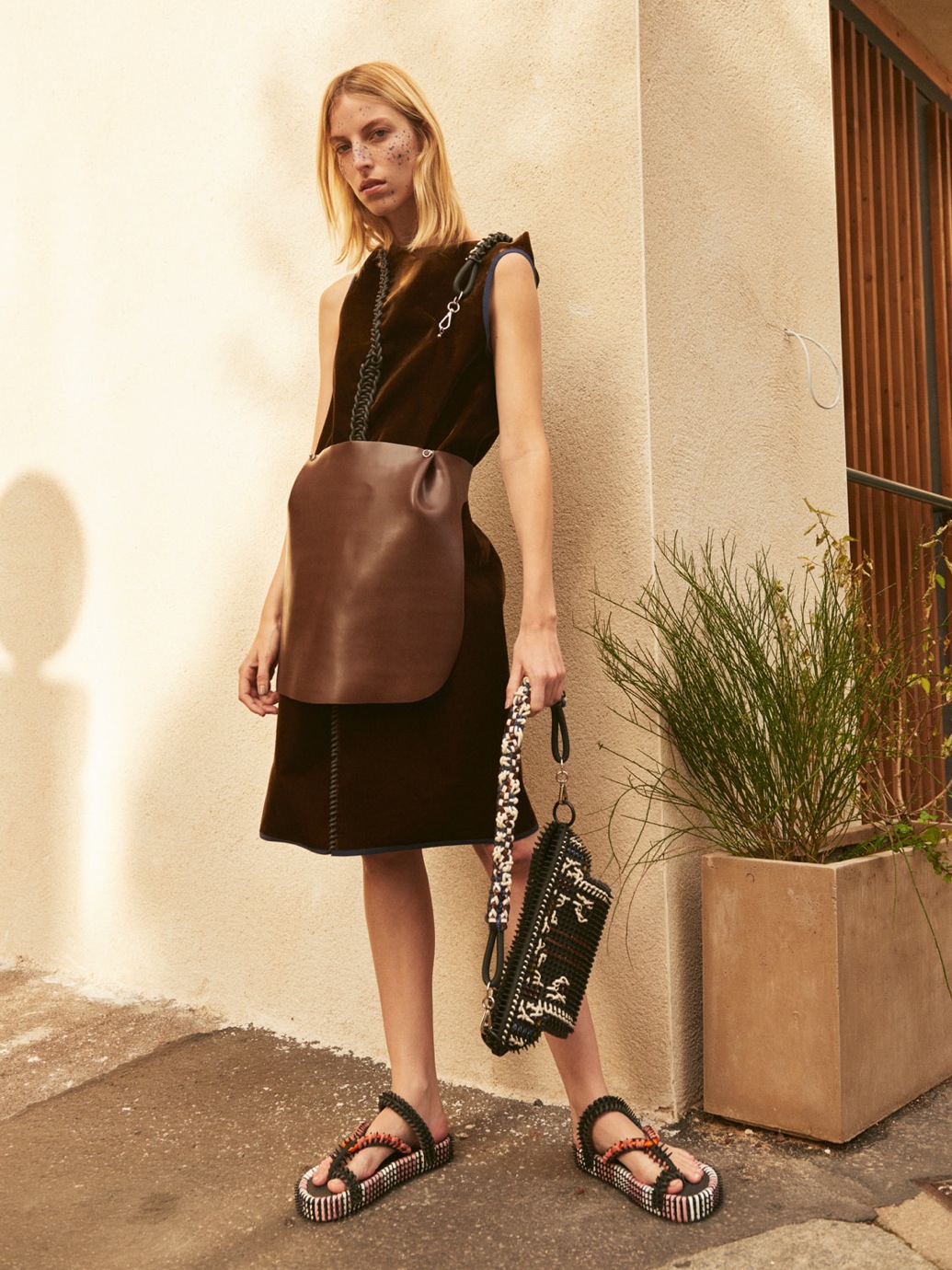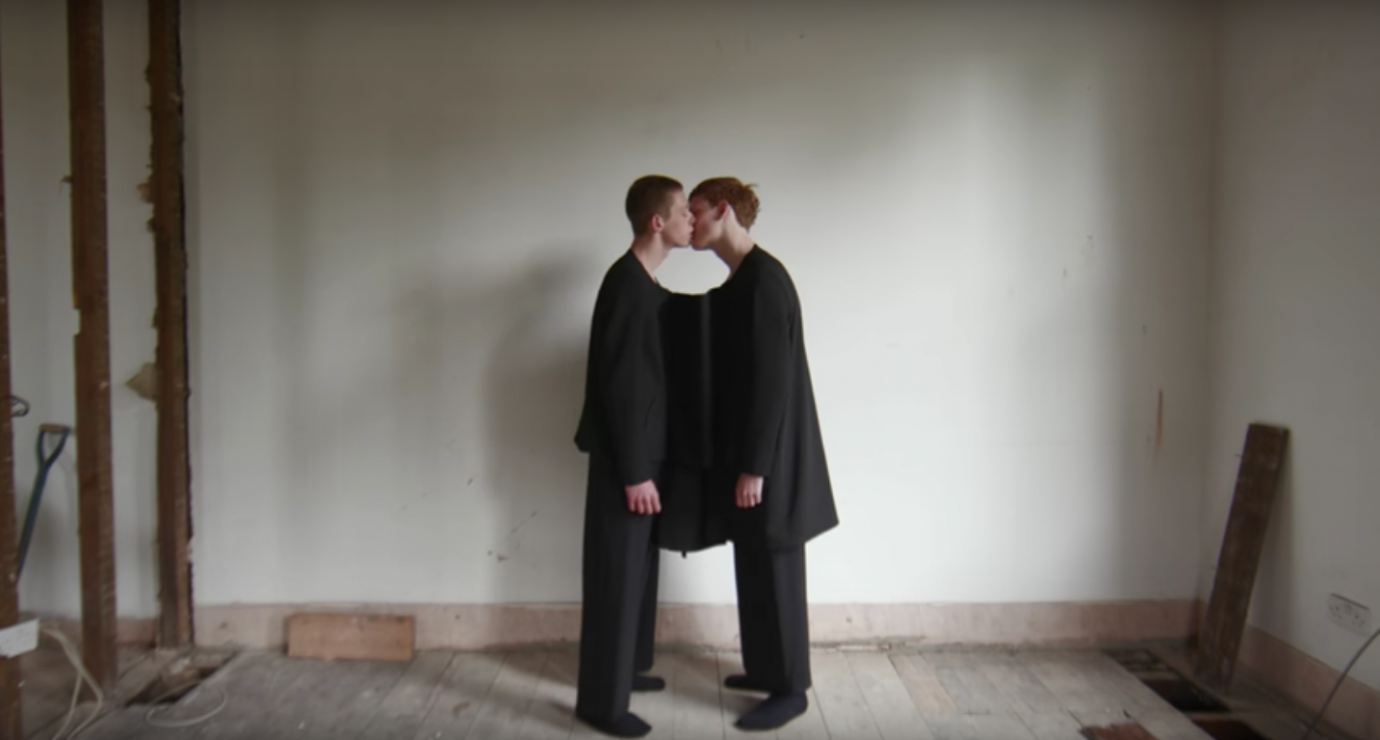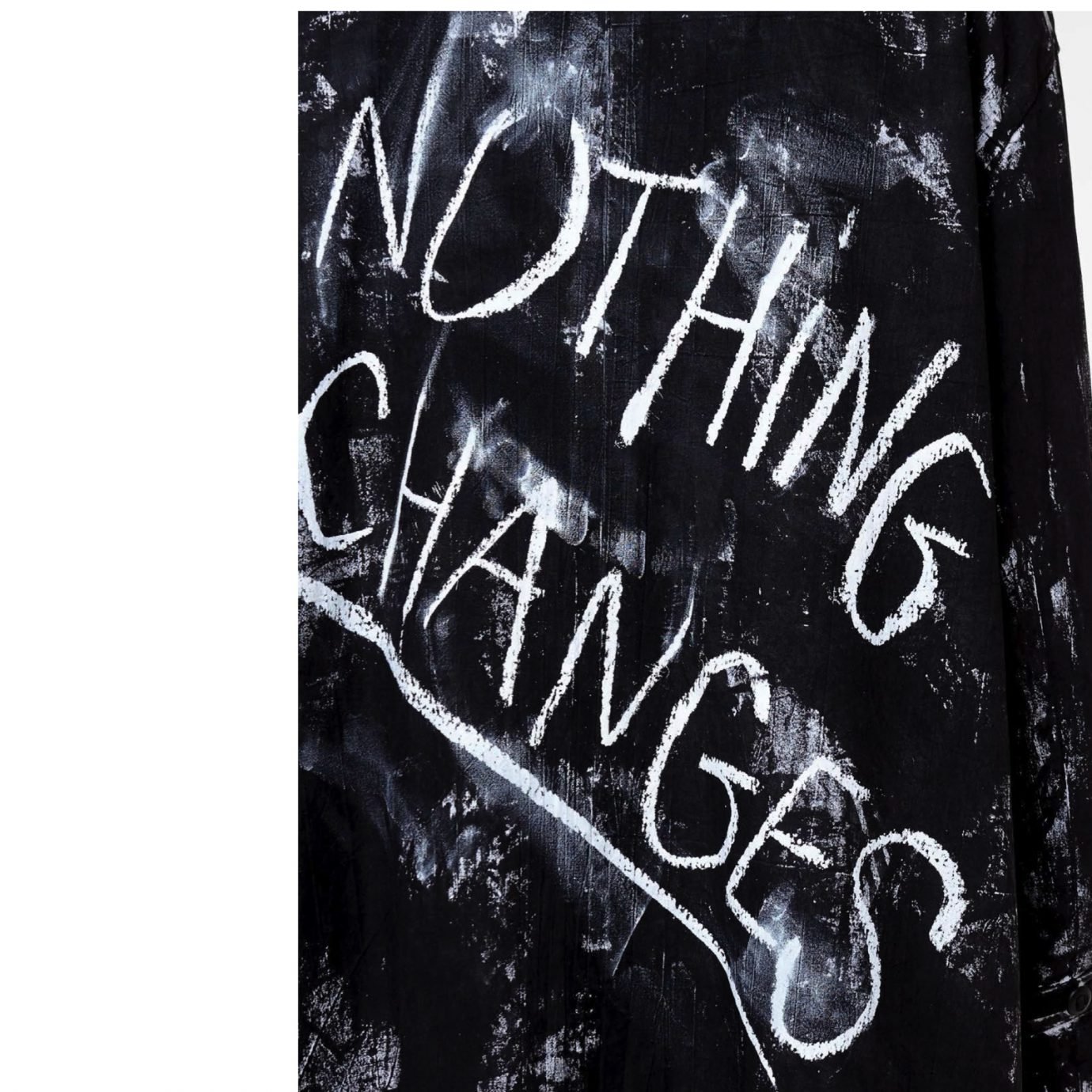“I SEE MY CAREER AS A MINIATURE CYCLE OF HUMAN EXISTENCE, RIGHT NOW I AM SIMPLY TRYING TO FIGURE OUT THE WHEEL.”
You are Paris-based, which is interesting because to me Paris is the centre of more classical fashion, style and design. What drew you there and how does the mood and vibe of the city influence you and the creation of your muse? Does Paris inspire you in the way it has so many artists before?
I think traditionally most designers that are trying to do something different have come to Paris – McQueen, Kawakubo, Margiela – and I have always found Paris to be the fashion capital of craft knowledge. I am however not here because of that, although I do find my work has greater resonance in Paris, contextually. I chose the city as a base because it just felt right for me (the size, the culture) and I have found a comfortable way to live here in an international world of kind, creative people. Anyway, we are all participating in a global world, I believe border irrelevance is accelerating.
So we may know a little more about you, where are you from? Has this been influential in your collections?
I was born in Lompoc California, a small town in a windy valley by the sea which was at the time the flower capital of the world. Raw elements such as wind and water are really important to my spirituality, which informs my work, and are part of my personal mythology. I have spent most of my life in the wilder parts of California, not the cities.
Throughout your work there is a lot of emphasis placed on craftsmanship and handmade design, such as with the current accessories sold on your online shop. I read that it took twenty people to make your graduate collection! Are all your garments created with this quality in mind?
I only do handmade work because I feel it has the most relevance today as part of my journey. To be honest, I do not like it when handmade is used just for the sake of it, but I feel it is what makes sense at this time. Also it’s not that I am trying to emphasize the importance of handmade things, it’s that I am trying to go back to basics, to forge a new way of working.
I try to create in an alternative route, if the industrial revolution had never happened, if sewing machines had never changed the way clothing is conceived – where would we be? This is something that truly fascinates me, because it reminds my mind to remain open, by understanding there is a long line of dominos behind us which lead to where we are now. Instead of trying to innovate through deconstructing and reconstructing, a theme which seems to me has inspired some of my greatest fashion and design influences, I am choosing a different path which is eager to erase mythology and tradition. This occurs through trying to get to a place of meaninglessness in my work. What is left after the codes and cultural nuances learnt by our societies are stripped away, is very interesting to me. I see my career as a miniature cycle of human existence, right now I am simply trying to figure out the wheel.
“WHAT I REALLY WANT TO DO IS CREATE A NATURAL EVOLUTION FOR MY WORK, I DON’T WANT TO SUDDENLY JUST JUMP INTO THE 21ST CENTURY AND DO SOMETHING LIKE 3D PRINTING, INSTEAD I AM ATTEMPTING TO DISCOVER NEW LINEAGES OF INNOVATION AND INVENTION.”
Everything in my work is done without the use of a sewing machine, or any sewing needles. I am renouncing a way of making clothing that was first invented 21,000 years ago. This is a small example of my attempt at rewriting the past. I am not at this time renouncing all types of technology, for example I still use an iron, but the sewing needle is where I have chosen to begin my refocusing. Instead of sewing the clothing together, I look at other ways, for example I have a gun which shoots small pieces of plastic into fabric, securing both pieces. The invention of new ways to put clothing together is something I spend a lot of time researching, and I am sure it will lead me somewhere unexpected and exciting. What I really want to do is create a natural evolution for my work, I don’t want to suddenly just jump into the 21st century and do something like 3D printing, instead I am attempting to discover new lineages of innovation and invention. We tend to be limited by our human mythologies that we built upon our traditions They dictate us, and I am interested in exploring what is left once these are washed away.
Your new collection is gorgeous. Would I be right in saying that it looks more wearable, less abstract, than your graduation collection?
I have to fight with myself to create, I do not think I am different than other artists with this. Realizing my own capacity for work, how much hand work can actually get done in 1000 hours, realizing I cannot continue if all of the cogs are not working beautifully together, this collection is a step I am proud of towards understanding my work in a bigger spectrum.
I can see that your core ideas remain – the obscurity through abstraction that you have spoken about before, for example. Can you tell me more about the progress and evolution of your key ideas?
I would say my process has evolved a lot, now when I work my mantra is: “If I can imagine it before it is created, I am not pushing myself hard enough.” It’s the only way I can keep my attention. Abstraction has led me to the beginning of art and culture, something which can only exist in my imagination. I am so bored of nostalgia, and it has so many forms, and I genuinely believe that if there is a reference, or something I have seen before in my work, it should be discarded.

